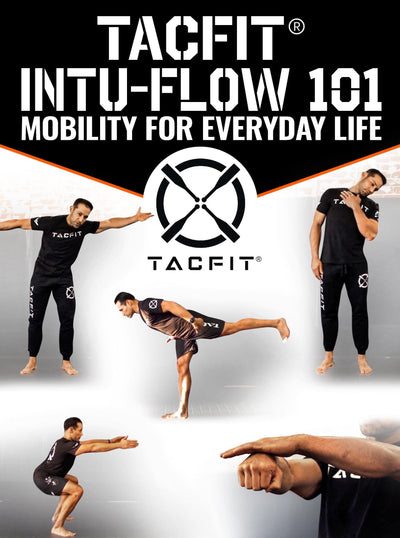Kettlebell Goblet Squat
Are you tired of the same old leg workouts? Looking to spice up your lower body routine and achieve a powerful, functional physique? Look no further than kettlebell exercises, especially the kettlebell goblet squat, and its various enticing variations. Kettlebell training not only builds strength but also enhances mobility, stability, and overall athleticism. In this blog, we'll delve into the key benefits of the kettlebell goblet squat and explore five exciting variations that will challenge and transform your leg day routine.
What this article covers:
- Benefits of Kettlebell Goblet Squats
- Mechanics of the Kettlebell Goblet Squat
- Variations to Elevate Your Workout
- Kettlebell Front Squat
- Kettlebell Swing Squat
- Kettlebell Split Squat
- Overhead Squat with Kettlebell
- Double Kettlebell Squat
Kettlebell Goblet Squat: A Foundation of Strength
The kettlebell goblet squat is a foundational movement that engages multiple muscle groups simultaneously, making it an excellent addition to any fitness regimen. Here's how to perform it:
Begin by holding a kettlebell close to your chest with both hands, keeping your elbows pointed down. Stand with your feet shoulder-width apart and toes slightly turned outward.
Initiate the movement by pushing your hips back and bending your knees, descending into a squat position.
Lower your body until your elbows touch your knees, while maintaining an upright posture and a neutral spine.Push through your heels to stand back up and return to the starting position.
Benefits of Kettlebell Goblet Squats
Full-Body Engagement: Goblet squats engage your quads, hamstrings, glutes, core, and upper back muscles, offering a comprehensive workout.
Improved Mobility: The goblet squat promotes hip, ankle, and thoracic spine mobility, enhancing your overall range of motion.
Core Stability: Holding the kettlebell in front of your body challenges your core muscles to maintain stability throughout the movement.
Functional Strength: This exercise mimics real-life movements, making it highly transferable to daily activities and sports performance.
Mechanics of the Kettlebell Goblet Squat
The kettlebell goblet squat is a compound movement that engages multiple muscle groups and joints. Its mechanics are relatively straightforward, yet the benefits it delivers are substantial.
Set Up: Begin by selecting a kettlebell that challenges you while allowing you to maintain proper form. Hold the kettlebell by the horns (the sides of the handle) with both hands, keeping your elbows pointed downward. Stand with your feet shoulder-width apart, and slightly turn your toes outward.
Initiate the Movement: As you start the squat, push your hips back, just like you're sitting back into a chair. Simultaneously, bend your knees, allowing yourself to lower into the squat position. It's important to keep your chest up, shoulders back, and your gaze forward.
Depth and Form: Lower your body until your elbows comfortably touch the insides of your knees. It's crucial to maintain a neutral spine throughout the movement, avoiding any rounding or excessive arching. Imagine that you're maintaining a proud and confident posture.
Rise with Power: Push through your heels to stand back up, extending your hips and knees. As you ascend, engage your glutes, hamstrings, and quads to power the movement. Remember to keep your core muscles engaged to ensure stability.
Variations to Elevate Your Workout
Kettlebell Front Squat
The kettlebell front squat involves holding the kettlebell in the rack position, where the kettlebell rests on the front of your shoulders. It emphasizes your core and upper back muscles while also increasing the demand on your lower body.
Kettlebell Swing Squat
Combining the power of kettlebell swings with squats, this exercise requires you to swing the kettlebell between your legs and explosively rise into a squat. It enhances explosive strength and cardiovascular fitness.
Kettlebell Split Squat
Elevate the intensity by performing split squats with a kettlebell held in the goblet position. This variation targets each leg individually, improving muscle imbalances and enhancing stability.
Overhead Squat with Kettlebell
Holding a kettlebell overhead while performing squats challenges your shoulder stability and core strength. It also requires greater mobility and control throughout the movement. Overhead kettlebell squats should always be done with safe weight!
Double Kettlebell Squat
For the ultimate challenge, hold a kettlebell in each hand at your sides and perform squats. The double kettlebell squat increases the load and demands a higher level of grip strength and stability.
Incorporating Kettlebell Squats into Your Routine:
To effectively incorporate kettlebell squats and their variations into your routine, consider the following tips:
Start with a weight that challenges you but allows for proper form. Focus on maintaining an upright posture and a neutral spine throughout the movement. Gradually increase the weight as your strength improves. Combine kettlebell squats with other lower body exercises for a well-rounded workout.
In conclusion, kettlebell goblet squats and their variations offer a dynamic and effective way to develop lower body strength, mobility, and stability. Whether you're a fitness enthusiast or an athlete seeking functional strength, these exercises have something to offer. Remember, mastering the basics before progressing to more advanced variations is key to achieving long-term success. So, grab a kettlebell and start squatting your way to a stronger, more resilient you!
Did you find the blog helpful? If so, consider checking out other guides:
- Pistol Squat on Kettlebell
- Kettlebell Squat Clean
- Kettlebell Squats Muscles Worked
- Kettlebell Bulgarian Split Squat
- Kettlebell Squats
- Sumo Squats with Kettlebells
- 20 Minute Kettlebell Workout
- 15 Minute Kettlebell Workout
- 5 Minute Kettlebell Workout
- 45 Minute Kettlebell Workout
- Kettlebell Curls
- Kettlebell Hammer Curl
- Kettlebell Crush Curl
- Kettlebell Towel Curl
- Kettlebell Curl to Press





